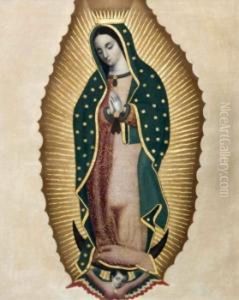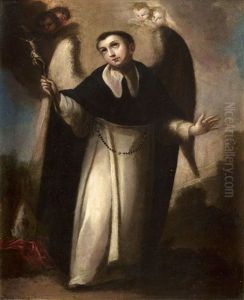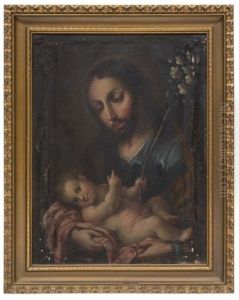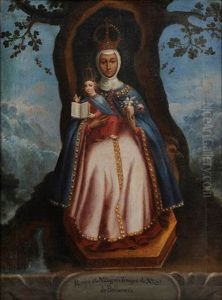Miguel Jeronimo Zendejas Paintings
Miguel Jerónimo Zendejas was an esteemed Mexican painter, born in 1724 in Puebla, a city renowned for its rich cultural and artistic heritage during the colonial period of New Spain (now Mexico). His life and career were deeply rooted in the artistic traditions of the region, making him a significant figure in the Puebla school of painting, which was characterized by its unique blend of European and indigenous influences.
Zendejas came from a family with artistic inclinations; his father, Antonio Zendejas, was also a painter, suggesting that Miguel Jerónimo's initial training and inspiration in the arts came from his family environment. This early exposure to the arts would have provided him with a solid foundation in the technical and aesthetic principles prevalent during that period, which were heavily influenced by Baroque sensibilities.
Throughout his career, Miguel Jerónimo Zendejas was known for his religious works, a common theme for artists of his time, reflecting the deeply religious context of colonial Mexico. His contributions to the art world include altarpieces, paintings of saints, and other ecclesiastical works, which were celebrated for their expressive detail, vibrant colors, and the emotional depth they conveyed. His style evolved over time, incorporating elements of the emerging Rococo style, which was characterized by lighter themes, more fluid lines, and a more playful use of color, distinguishing his later works from the more rigid and somber Baroque style of his earlier years.
Zendejas's works were primarily commissioned by religious institutions, a testament to the high regard in which he was held within ecclesiastical circles. His paintings can still be found in various churches and cathedrals in Puebla and other parts of Mexico, serving as enduring testimonies to his skill and devotion to his faith and art.
Miguel Jerónimo Zendejas passed away in 1815, leaving behind a legacy that has been somewhat overshadowed by other contemporary artists of the Mexican colonial period. However, his contributions to the Puebla school of painting and Mexican art as a whole have been receiving increased recognition in recent years, as scholars and art enthusiasts seek to rediscover and celebrate the rich artistic traditions of this era.



